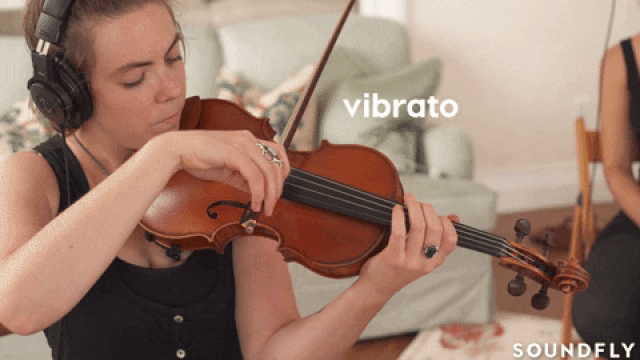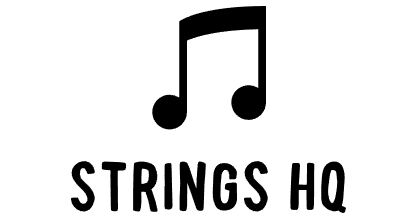Don’t you just love watching a violinist in action? Their facial expressions and body moving in tandem with their music can be far more satisfying than any music video on YouTube.
But, a curious question might enter your mind at this exact moment: Why do violinists move so much?
In this article, we’ll try to understand the reasons behind this behavior by addressing this topic more in-depth. Are you ready to dive in?
Why Do Violinists Move So Much: A Summary
Violinists tend to move their bodies and shake their heads throughout the performance because they connect to the music they’re playing. It’s a natural body reaction to hearing music, much like bobbing your head or tapping your feet to your favorite rock song!
Table of Contents
What Does It Mean When Violinists Move?
When a violinist moves as he plays, it means that his body is in sync with the rhythm and the melody he’s set. This way, hitting all the right notes should be easier for him since the music has already affected his body enough to trigger a reaction.
There may also be another meaning to a violinist’s constant movement. If he’s associated certain head shakes or torso motions with specific parts of his music piece while practicing, he’ll develop muscle memory.
Therefore, when the time comes to play each section of the composition, the way that his body moves can help guide him in the correct direction. It’s a lot like linking a song to a piece of information you’re trying to memorize to help yourself remember it in a test!
Let’s not forget that some violinists move their bodies out of habit and because they’re comfortable playing their instrument. After having spent years practicing the violin, it’s only normal for a violinist to sway with the sound, knowing they won’t miss a beat.
Is There Any Practical Purpose to a Violinist Moving So Much?
Yes. Besides being a natural reaction to music, moving whilst playing can have some practical benefits to a violinist.
For example, when a violinist moves opposite to the direction of bowing, this movement can result in a faster bow. Ultimately, this leads to him producing confident tunes.
Plus, leaning forward can make it less of a challenge to reach the tip of the bow. The same happens when a violinist leans back; it’ll be almost effortless to hit the heel.
Sometimes, even moving the body to certain positions or angles might help with different shifts or string crossings.
Yet, more often than not, the main reason behind a violinist’s constant movement is that they feel the music inside them and let it take over their emotions.
Why do Violinists shake their hands?
Violinists shake their ‘finger’ hands (as opposed to their bow hands) back and forth to perform what’s known as ‘vibrato’.
By doing this, the Violinist alternates between shortening the string and lengthening the string in quick succession, creating a ‘wobbly’ type sound.
Vibrato is a technique that advanced Violinists use in varying kinds of music. Classical and Romantic music for example places a heavy emphasis on the use of Vibrato. In contemporary music, Vibrato is often used to soften the end of the note (rather than the note simply coming to a stop).
Baroque music on the other hand does not incorporate Vibrato. The use of Vibrato in music is largely stylistic and to the player’s taste, rather than instruction on the written piece of music.

Is There Such a Thing As Too Much Movement When Playing the Violin?
There is such a thing as too much movement whilst playing the Violin. After years of being a violinist, or even as an excited beginner, some violinists end up with excessive movement when performing. In this case, things tend to lean far from the beneficial side and right into a more negative perspective.
Excessive movement may cause several unwanted scenarios, such as:
- Distracting the audience and detaching them from the mood that has been set by the violinist
- Turning off other players and directing their attention away from their instruments
- Misdirecting the violinist’s energy and making their sounds less pronounced
Luckily, you can always teach yourself to slow down your body movements and relax while playing the violin. Sure, it might take a while, especially after years of having this habit, but practice makes perfect, right?
Here are a few guidelines to help you minimize your extravagant movements.
- Sit in front of the mirror and watch yourself play to take note of your motions
- Train yourself to move only the essentials, which are your arms
- Relax your wrist and fingers and make sure they’re always flexible
- Ensure that your torso, head, shoulders, and the violin itself don’t sway while you’re playing
- Start by playing open strings in this position until you’re completely comfortable
- Once it gets easier to perform with no movements, you can practice more difficult pieces
- Stay patient and pay extra attention to the sound until you get rid of your excessive movement
Why Do Violinists Make Funny Facial Expressions?
Before you judge a violinist for grimacing in the middle of a performance, you should know that all musicians tend to make those hilarious faces. The weird facial expressions can include cringing, frowning, raising the brows, and more.
There’s a multitude of reasons behind those strange faces, but usually, it’s because the violinist’s emotions are connected with the music. When he plays a certain note or shifts from one to another, his face responds to that change involuntarily.
Sometimes, a violinist can frown or close their eyes to concentrate better. Other times, they might’ve made a mistake and are only reacting to that.
Some musicians may also make funny expressions because they’re nervous or facing technical issues.
This phenomenon is even more noticeable in singers, especially if the words they’re singing are somewhat personal. Man, even if you sing something entirely unrelated to your life, you’re bound to make those hilarious faces on karaoke night!

Do Violinists Practice Moving?
Different violinists move in various ways and with varying degrees. Therefore, not all of them practice moving as they might not prefer to move at all while playing the violin.
Some violinists won’t move during practice, preferring to stand still and concentrate on their instruments. Yet, they might still sway when it’s showtime without needing to work on their movements firsthand. Usually, it’s experts that have achieved this level of mastery.
Other people like to keep things natural. They’ll move a little bit, or a lot, during practice as well as when they’re performing on a stage. These violinists just tend to go with the flow, letting the music and their emotions lead the way.
Finally, some violinists do practice moving to make sure they don’t end up standing completely immobile on the stage. Typically, beginners fall under that category. They want to blend in with other musicians and connect with their audience.
Let’s not forget that not moving while playing any musical instrument may project vibes of uncertainty or nervousness. That’s not something a violinist would like for their audience to see, so they work on their body movements to give off an air of confidence.
Is It an Advanced Technique to Move Whilst Playing the Violin?
While this isn’t a consensus, moving while playing the violin can be considered an advanced technique. It only makes sense for an experienced violinist to be constantly on the move because he’s sure he’ll hit all the right notes.
He’s practiced numerous times, committed every note and shift to memory, and is currently enjoying himself and letting music direct his body. If that’s not a high level of mastery, we don’t know what is!
On the other hand, a beginner might find it hard to move their body in tandem with the music they’re playing. It may take them a while to develop the necessary coordination for this to happen, but they can get there with practice.
How to Move Naturally While Playing the Violin?
Of course, people, and therefore musicians, move and sway in different ways. Some will lean forward and backward, others will shake their heads, and so on.
As a result, there isn’t a certain route you should take to learn how to move while playing the violin. All you have to do is listen to the melody, find its echo inside your body, and mimic its rise and fall. It’s very much like dancing, but here, you’re both the musician and the dancer!
Still, you can follow several tips to help you move more smoothly and naturally while playing the violin. Here’s where you can start:
- Make sure you stand or sit in front of the mirror to watch your progress and take mental notes
- Play a slow music piece
- Listen carefully to the music and create a deep connection with every note
- Let your body respond to each shift of its own accord
- Don’t be tense, but breathe slowly and make sure your body is relaxed
- Try different movements until you find your comfort spot
- Repeat those steps every time your practice, increasing the difficulty and speed of your music gradually
If you keep a steady schedule and commit to your goal, you should get the desired results in maybe a month or two!
To Wrap It Up
“Why do violinists move so much?”
It’s a fair question to ask after watching a live performance of an orchestra. Well, violinists tend to move a lot for a number of reasons. It’s either because they have a deep connection with their music, they’re comfortable playing their instrument, or it’s just muscle memory.
Because of how natural it looks to be moving while playing the violin, many musicians practice this skill to reach out to their audience. But remember, too much movement can distract the crowd. That’s why a violinist must keep things in perfect balance.
